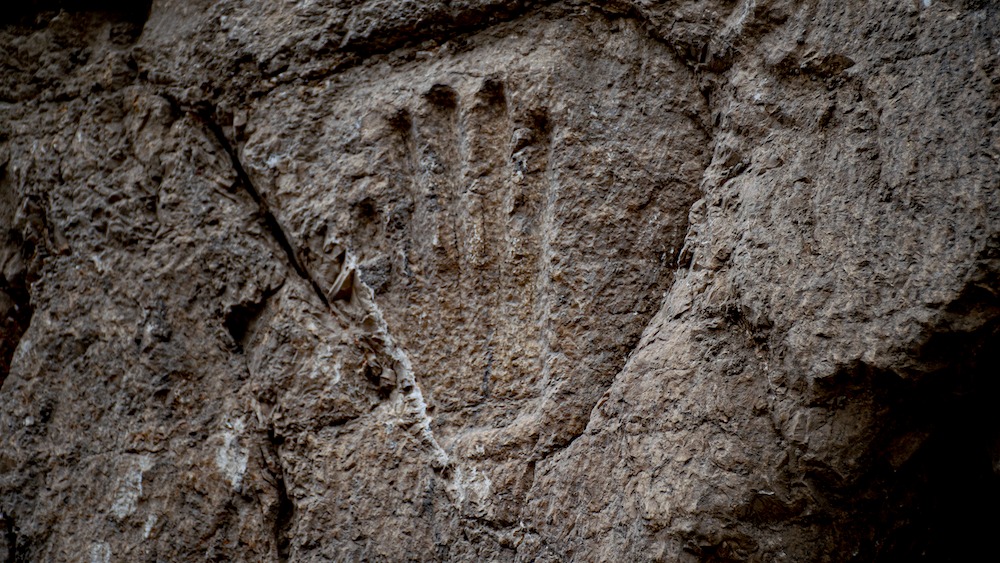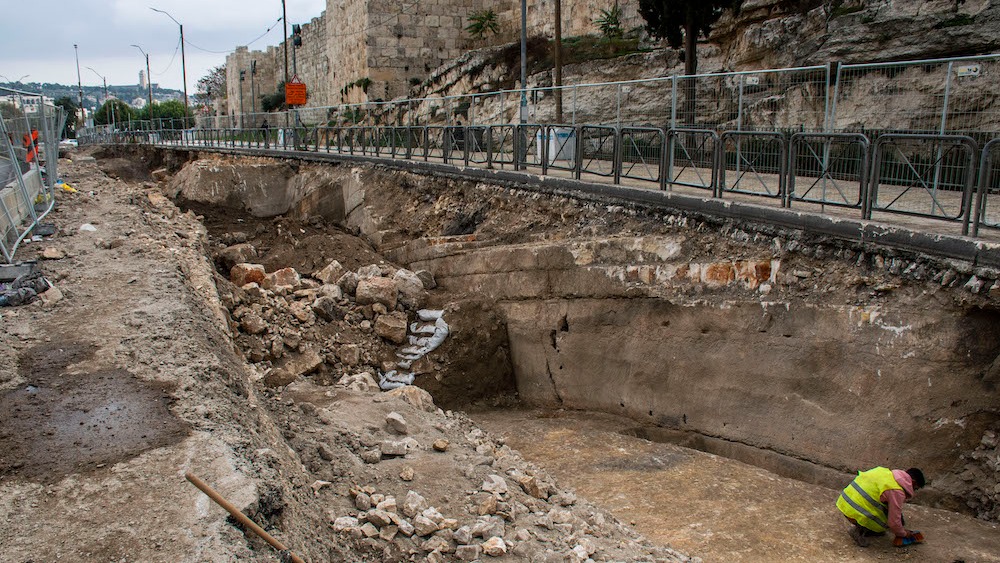Beneath a busy street in Jerusalem sits a 1,000-year-old moat with a secret handprint
Archaeologists in Jerusalem have unearthed a massive moat beneath a busy roadway. But a handprint etched into the stone structure remains a mystery.

A mysterious hand imprint carved into the wall of a previously buried moat has grabbed the attention of archaeologists in the Old City of Jerusalem.
Archaeologists made the discovery during survey work ahead of a street infrastructure project near one of the city's main thoroughfares. As they dug deeper, the archaeologists unearthed a moat, which now tunnels beneath the bustling roadway. The moat was likely dug by the city's Muslim defenders sometime around the 10th century as a fortification to help protect the city walls, according to a statement from the Israel Antiquities Authority (IAA).
"People are not aware that this busy street is built directly over a huge moat," Amit Re'em, a regional archaeologist at the IAA who was part of the excavation team, said in the statement.
The "rock-hewn" moat measures at least 33 feet (10 meters) wide and between 7 feet and 23 feet (2 m and 7 m) deep, and "its function was to prevent the enemy besieging Jerusalem from approaching the walls and breaking into the city," according to the statement.
However, archaeologists remain uncertain about the purpose of the perplexing handprint etched into the wall.
Related: Ancient 'ritual bath' and elite villa unearthed by Jerusalem's western wall
"Does it symbolize something? Does it point to a specific nearby element? Or is it just a local prank? Time may tell," the researchers wrote in the statement.
Get the world’s most fascinating discoveries delivered straight to your inbox.
Empty moat
While it was common for moats, such as the ones surrounding castles in Europe, to be filled with water, in this case it was left dry in hopes that its sheer size would be a near-insurmountable "obstacle slowing down the attacking enemy," Re'em said.
Historians from the time recounted that the massive moat served its purpose (sort of) and helped deflect invading forces such as the Crusaders, who surrounded and attacked the city during the Siege of Jerusalem in A.D. 1099 — a battle that was part of the religious wars between Christians and Muslims. However, in the end the enemy succeeded in infiltrating the city, despite the heavy fortifications, according to the statement.
"Exhausted by the journey, [the Crusaders] stood opposite the huge moat, and only after five weeks succeeded in crossing it with deploying tactics and at the cost of much blood, under heavy fire from the [Muslim] and Jewish defenders," Re'em said.
He added, "In the eras of knights' battles, swords, arrows and charging cavalry, the fortifications of Jerusalem were formidable and complex…. Armies trying to capture the city in the Middle Ages had to cross the deep moat and behind it two additional thick fortification walls, [while] the defenders of the city on the walls rained down on them fire and sulfur."
The defenders also built "secret tunnels" within the fortifications — which were unearthed during previous IAA excavations — where the city's militia "could emerge into the moat and attack the enemy by surprise, and then disappear back into the city," according to the statement.
Jennifer Nalewicki is former Live Science staff writer and Salt Lake City-based journalist whose work has been featured in The New York Times, Smithsonian Magazine, Scientific American, Popular Mechanics and more. She covers several science topics from planet Earth to paleontology and archaeology to health and culture. Prior to freelancing, Jennifer held an Editor role at Time Inc. Jennifer has a bachelor's degree in Journalism from The University of Texas at Austin.



